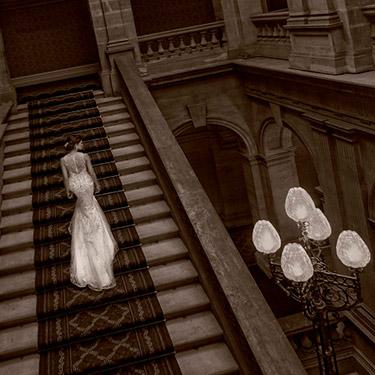What is a 'fourdrinier' or a 'mould made' paper ?
The production of paper begins with a fibrous suspension which is retained on a wire. After dewatering, the consolidated web gains a specific texture through pressing, and will then be dried.
The fastest and most recent machines are based on the 'fourdrinier' process, which gives the fibers a rather strong orientation in the production or 'machine' direction.
The so called 'mould' process is closer to the ancient, hand made papermaking process, and specifically devoted to Fine Art products. The 'mould made' papers have a specific homogeneous sheet formation (or 'looking through'), a deeper marked surface texture, and more randomly oriented fibers in all directions. As a result, the mould paper is generally renowned for its stability in the wet state, which is even increased when rag in an important component of the pulp composition.
The papermaking process delivers jumbo rolls, which will be converted in small reels or sheets, depending on their final use.
If the long edge of the paper sheet is along the machine direction, the product is cut 'long grain'. If not, the product is cut 'short grain'.
Please pay attention when folding : the best result will be obtained when the folding occurs parallel to the fiber direction (or along the long edge on a 'long grain' sheet). If the paper is folded in the cross direction, the fibers will be damaged and may lead to visible sheet degradation in the folding area.
Back to FAQ


